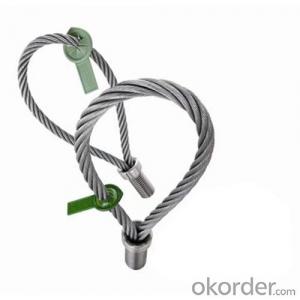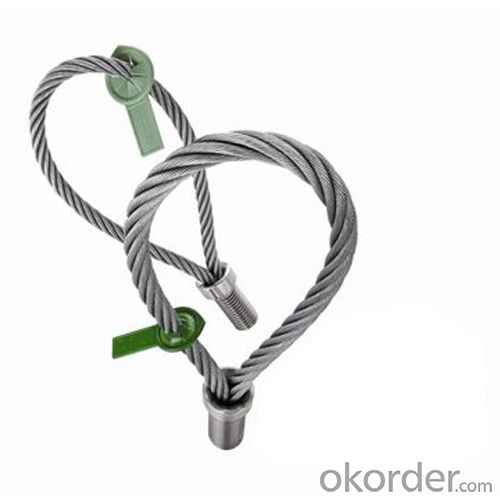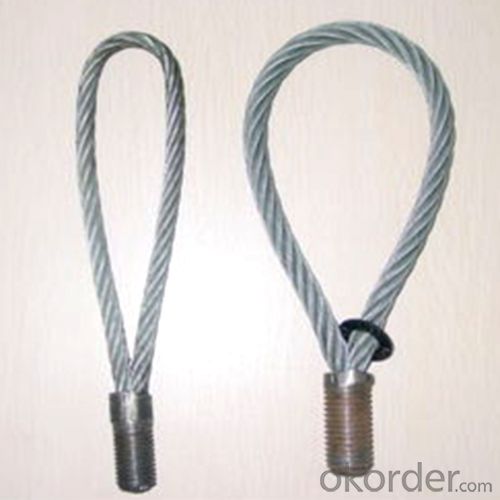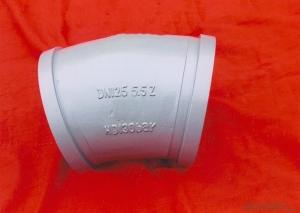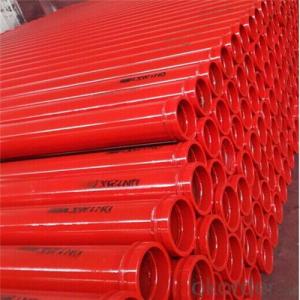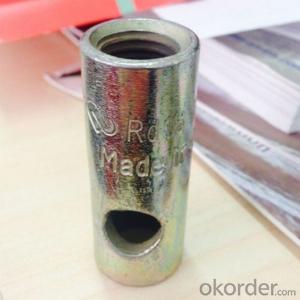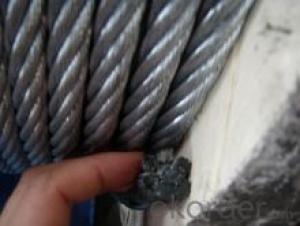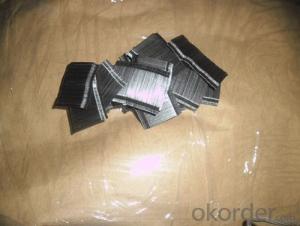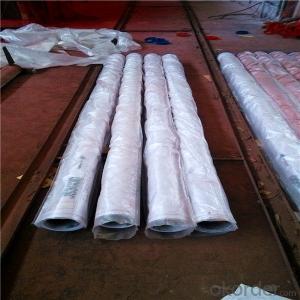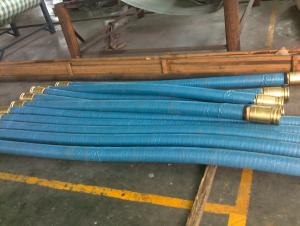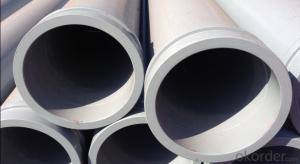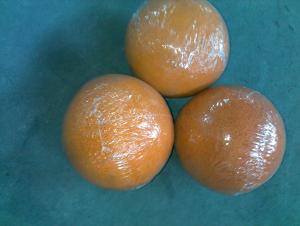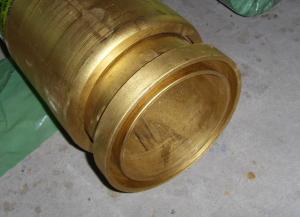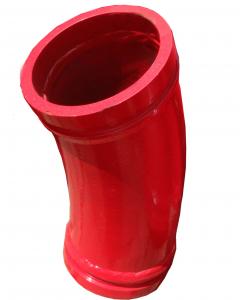Concrete Wire Lifting Loops for Concrete Construction
- Loading Port:
- Tianjin
- Payment Terms:
- TT OR LC
- Min Order Qty:
- 100 pc
- Supply Capability:
- 10000 pc/month
OKorder Service Pledge
OKorder Financial Service
You Might Also Like
Wire lifting loops for concrete construction
1.Specifications:
1) Products: lifting socket, lifting insert, bend and waved socket, transport socket, flat socket, socket with bar and others
2) Material: stainless 304/316, ST52.3
3) Diameter: M/RD 12-36mm
3) Length: 40-200mm
Capacity: 0.5-12.5MT
Break load: ≥111kN
Test strength: 1800-2080kN
Repeatedly bending times: 13-16
6) Surface: plain, galvanized
2. Packaging and delivery:
Packaging details: goods are packed in cartons and then in pallets
Delivery lead time: within 25 days after confirming order
3. Primary competitive advantages:
1)More than 10 years focus on building material manufacturing
2)Prompt delivery time within 25 days after confirming order
3)Eathu's products are enhanced by QA and quality control checks during production, if necessary each order can be sent out with certificate referring back to test
4)Precast concrete elements may be lifted several times after casting and during storage and erection-by using this system, designer and the worker manager ensure that each lift is carried out safely and quickly
Market:
Asia
Australasia
Central/South America
Mid East/Africa
North America
Western Europe
FAQ:
Q1: How long about delivery time Concrete transport socket ?
A1: The delivery time will be very short, normally we keep the raw materials for old customers and sometime we also keep stock products to
make sure delivery time in any emergency cases.
Q2: How do we guarantee the quality of our Concrete transport socket ?
A2: We have established an advanced quality management system which conducts strict quality tests at every step, from raw materials to the final product. At the same time, we provide extensive follow-up service assurances as required.
Q3: How soon can we receive the product after purchase?
A3: Within three days of placing an order, we will book the vessel for goods. The specific shipping date is dependent upon international and government factors, but is typically 7 to 30 workdays.
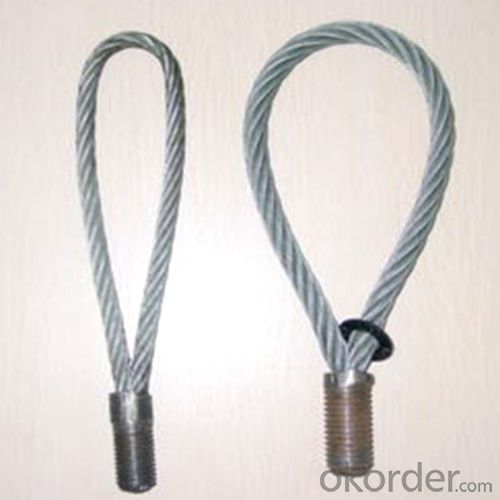
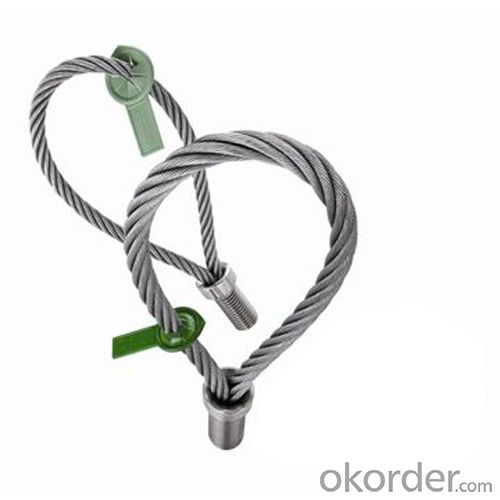
- Q: How can a faulty gearbox affect the pump's performance?
- The performance of a pump can be significantly affected by a faulty gearbox, which is responsible for transmitting power from the motor to the pump. Any dysfunction in this component can result in various issues. To begin with, a decrease in the pump's efficiency can be caused by a faulty gearbox. Its purpose is to regulate the speed and torque of the pump, ensuring optimal operation. If the gearbox is faulty, it may not be able to provide sufficient power to the pump, leading to reduced performance and efficiency. This can result in increased energy consumption and decreased overall productivity. Moreover, excessive vibration and noise can be experienced by the pump due to a faulty gearbox. A properly functioning gearbox helps absorb and distribute the forces generated during operation, minimizing vibration and noise levels. However, if the gearbox is faulty, it may fail to adequately dampen these forces, resulting in heightened vibrations and noise. This can not only affect the pump's performance but also cause premature wear and tear of other components, further impacting its efficiency. Furthermore, inconsistent flow rates and pressure fluctuations can be caused by a faulty gearbox. The gearbox plays a crucial role in controlling the speed and output of the pump. If it is malfunctioning, it may be unable to maintain a consistent flow rate or pressure, leading to fluctuations in the pump's performance. Inconsistent flow rates can disrupt processes that rely on precise volumes or pressures, causing inefficiencies and potential damage to downstream equipment. In conclusion, the performance of a pump can be detrimentally affected by a faulty gearbox. It can lead to decreased efficiency, increased vibrations and noise, as well as inconsistent flow rates and pressure fluctuations. Therefore, it is crucial to regularly maintain and promptly repair or replace faulty gearboxes to ensure the optimal functioning of pumps and prevent any further damage or operational issues.
- Q: How long does it take to receive concrete pump spare parts after ordering?
- The time it takes to receive concrete pump spare parts after ordering can vary depending on several factors. It is important to note that the availability of the specific spare parts you need and the location of the supplier can significantly impact the delivery time. In general, if the spare parts are readily available and in stock, you can expect to receive them within a few days to a week. This assumes that the supplier has a streamlined order processing system and prompt shipping arrangements. However, if the spare parts are not in stock, it may take longer to receive them. In such cases, the supplier may need to order the parts from a manufacturer or source them from a distributor. This could add additional lead time to the delivery process, ranging from a few weeks to several months, depending on the availability and sourcing process. It is advisable to check with the supplier or manufacturer before placing the order to get an estimate of the delivery time. Factors like the supplier's location, transportation mode, and any potential customs or logistics delays should also be taken into consideration. To expedite the delivery process, some suppliers may offer expedited shipping options at an additional cost. This can be beneficial if you need the spare parts urgently. Overall, the time it takes to receive concrete pump spare parts after ordering can vary, but being proactive, communicating with the supplier, and planning ahead can help ensure a smoother and quicker delivery process.
- Q: How often should hopper grate pin retainers be inspected or replaced in a concrete pump?
- Hopper grate pin retainers in a concrete pump should be inspected regularly, ideally before each use, to ensure proper functioning and prevent any potential issues. If any signs of wear, damage, or looseness are detected, the retainers should be replaced immediately to maintain the efficiency and safety of the concrete pump operation.
- Q: How often should hopper agitator shaft bearings be inspected or replaced in a concrete pump?
- The hopper agitator shaft bearings in a concrete pump should be inspected regularly, at least once every six months, to ensure proper functioning. However, the exact frequency of replacement would depend on the manufacturer's recommendations, the intensity of usage, and the condition of the bearings. It is crucial to monitor the bearings for any signs of wear, damage, or excessive vibration, as this can lead to equipment failure and potential safety hazards.
- Q: How can a faulty accumulator affect the pumping efficiency?
- A faulty accumulator can negatively impact pumping efficiency by causing inconsistent pressure and flow rates in the system. This can lead to excessive energy consumption, reduced overall performance, and potential damage to the pump and other components.
- Q: How often should hopper agitator motors be inspected or replaced in a concrete pump?
- The frequency at which hopper agitator motors should be inspected or replaced in a concrete pump depends on various factors such as the usage intensity, operating conditions, and maintenance practices. However, as a general guideline, it is recommended to inspect hopper agitator motors regularly, at least once every three to six months. Regular inspections can help identify any signs of wear and tear, damage, or malfunctioning in the motor. This can include issues such as abnormal noise, excessive vibrations, overheating, or reduced performance. Additionally, it is important to check for any loose or worn out components, such as belts, pulleys, or bearings, which could affect the motor's efficiency and lifespan. If any significant issues or malfunctions are detected during the inspection, it may be necessary to replace the hopper agitator motor. The decision to replace the motor should be based on the severity of the problem, the age of the motor, and the cost-effectiveness of repairs compared to a replacement. Besides regular inspections, it is crucial to follow the manufacturer's recommendations for maintenance and lubrication of the hopper agitator motor. Proper maintenance practices can extend the lifespan of the motor and minimize the need for replacement. Ultimately, the specific frequency of inspections and replacement of hopper agitator motors in a concrete pump should be determined based on the specific circumstances and conditions in which the pump is operated, in consultation with the manufacturer's guidelines and recommendations.
- Q: How can a damaged concrete pump piston affect the pumping efficiency?
- A damaged concrete pump piston can significantly affect the pumping efficiency in various ways. Firstly, a damaged piston can lead to decreased power and force exerted by the pump, resulting in reduced pumping capacity. The piston is responsible for creating the necessary pressure to push the concrete mixture through the pumping system. If it is damaged, it may not be able to generate sufficient pressure, leading to slower and less efficient pumping. Secondly, a damaged piston can cause leaks within the pump system. The piston is a critical component that seals the concrete and prevents it from leaking back into the hopper. If it is damaged or worn out, it may not create a tight seal, resulting in leakage. This not only leads to a loss of material but also reduces the efficiency of the pumping process as the pump has to work harder to compensate for the loss. Furthermore, a damaged piston can also cause blockages and clogs in the pumping system. The piston's movement creates suction, which pulls the concrete mixture into the pump. If the piston is damaged, it may not create enough suction, causing the mixture to flow unevenly or get stuck in the system. This can cause delays and interruptions in the pumping process, reducing overall efficiency. In conclusion, a damaged concrete pump piston can impact pumping efficiency by reducing power and force, causing leaks, and leading to blockages. Regular maintenance and timely repair or replacement of damaged pistons are essential to ensure optimal pumping performance and efficiency.
- Q: What are the elements of concrete pump and concrete pump truck selection?
- Concrete casting factors, concrete pump truck selection should be based on concrete engineering objects, characteristics, the requirements of the maximum transmission distance, concrete construction plan, concrete pump form and concrete conditions for comprehensive consideration
- Q: When concrete is poured, how high can the concrete pump be put?
- At present, the commonly used car pump, the length of the arm more than 30 meters to more than 40 meters, there are a small number of arms as long as more than 50 meters to more than 70 meters
- Q: How can one source reliable suppliers for concrete pump spare parts?
- To find reliable suppliers for concrete pump spare parts, several steps can be taken. Firstly, conducting comprehensive research on potential suppliers is crucial. This involves searching online directories, industry forums, and construction equipment and spare parts marketplaces. Valuable insights into the reliability and quality of the suppliers can be gained by reading customer reviews and ratings. Secondly, seeking advice and recommendations from experienced industry professionals and experts in the concrete pump industry is advisable. They can provide references for reliable suppliers they have previously worked with. Attending trade shows and exhibitions related to the construction industry is also a beneficial way to connect with suppliers and evaluate their product offerings in person. This allows for direct communication and the opportunity to assess the reliability and quality of their spare parts. Additionally, requesting samples or product catalogs from potential suppliers is essential to ensure that the spare parts meet the required specifications and quality standards. This helps in assessing the reliability of the suppliers and the compatibility of their products with the concrete pump. Furthermore, conducting background checks on the suppliers is crucial. Verifying their credentials, certifications, and licenses provides assurance of their reliability and professionalism. Inquiring about their manufacturing processes and quality control measures is also beneficial to ensure the consistency and durability of the spare parts. Lastly, comparing prices, warranties, and after-sales services offered by different suppliers aids in making an informed decision. Striking a balance between cost and reliability is important to establish a long-term and fruitful partnership. By following these steps and thoroughly evaluating and researching potential suppliers, reliable suppliers for concrete pump spare parts can be sourced. This ensures the smooth operation and maintenance of equipment.
Send your message to us
Concrete Wire Lifting Loops for Concrete Construction
- Loading Port:
- Tianjin
- Payment Terms:
- TT OR LC
- Min Order Qty:
- 100 pc
- Supply Capability:
- 10000 pc/month
OKorder Service Pledge
OKorder Financial Service
Similar products
Hot products
Hot Searches
Related keywords
